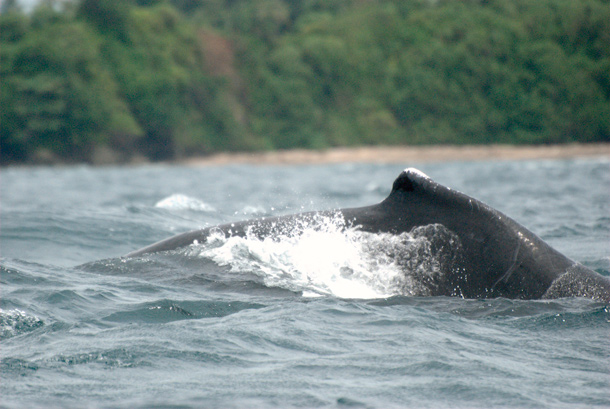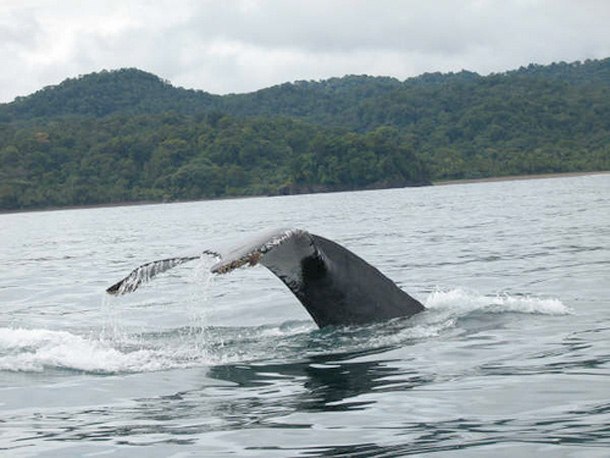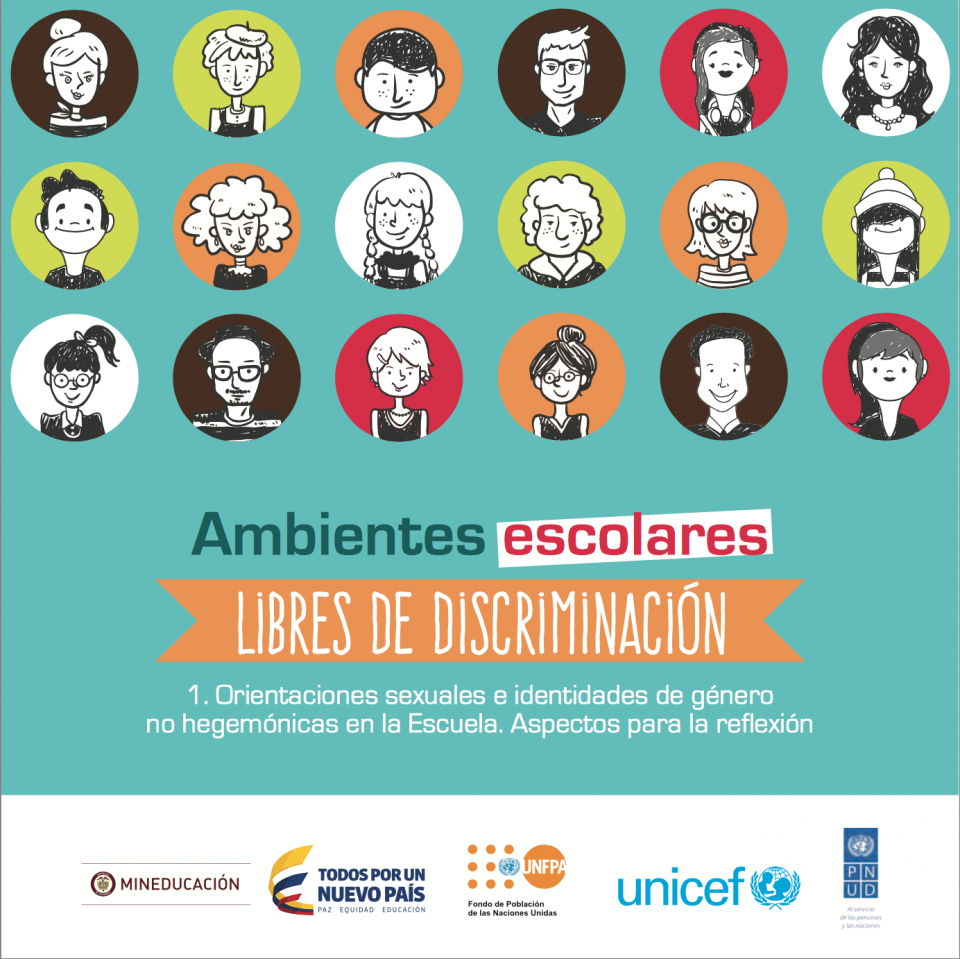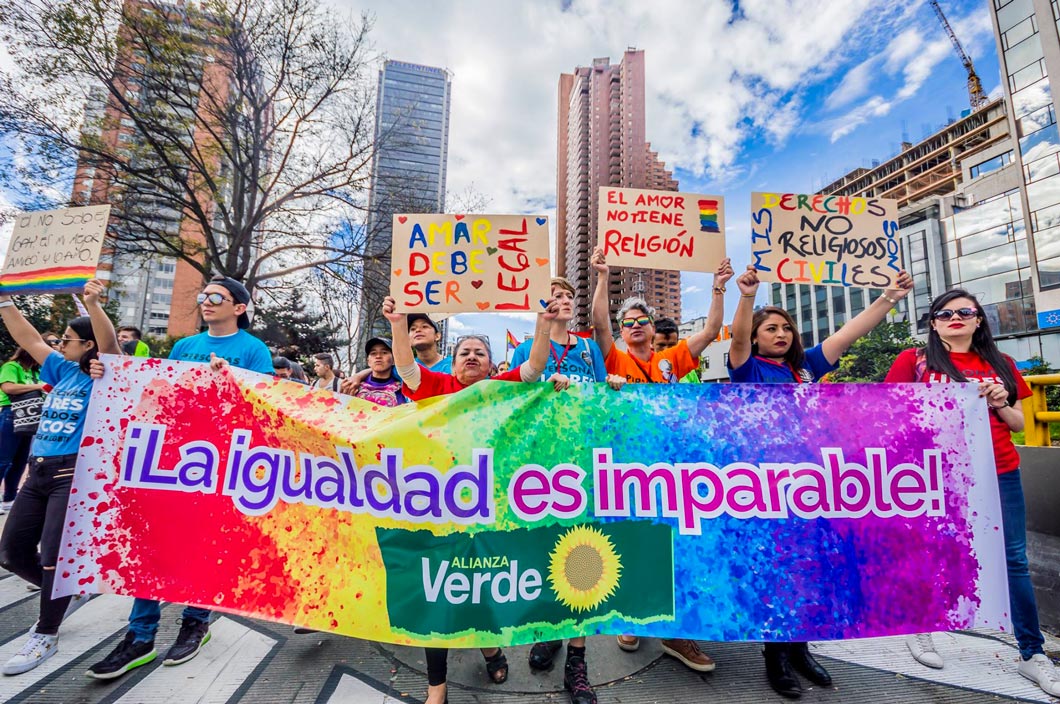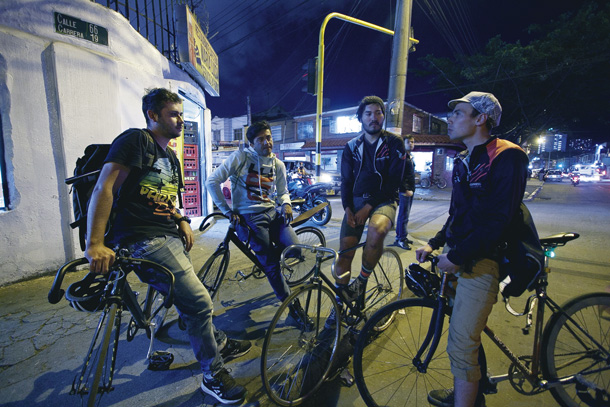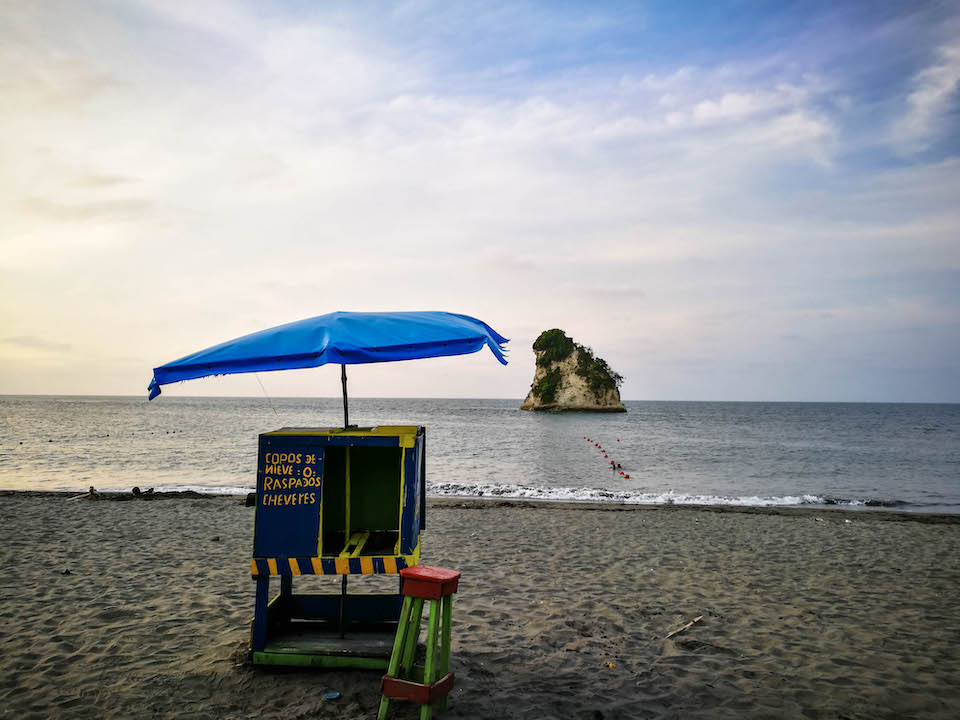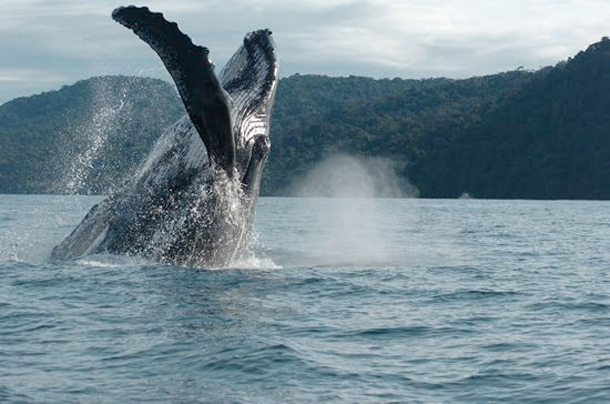
A whale caught breaching the water. Photo: optours.com
Colombia’s Choco region is one of the most biodiverse in the world. Chris Bell heads west to catch a glimpse of the humpback whales that visit each year
The prow of a small lancha bobs gently in the calm waters of a clear sunny day in the Colombian Pacific. There is absolute silence, broken only by the lapping of small waves against the hull of our little craft. Without warning the silence is broken by a deep, guttural exhaling noise behind me; I spin around just in time to see the mighty tail flukes of some humpback whales slip, soundlessly, into the deep blue waters, as the ghost of its steamy, salty breath hangs in the warm air.
Suddenly I feel very small, sitting on my little prow with only the jungle-clad coastline of Choco visible in the distance. This whale may have surprised me, but its presence here is no shock: every year, between June and October, thousands of humpback whales leave the freezing waters of Antarctica and head north, to the warm tropical seas of Ecuador, Colombia and Panama, to breed and give birth in safety. And so, here I am, bobbing around in a little boat, owned by a man named Baby, watching the humpbacks of Colombia.
A humpback whale can stay underwater for up to half an hour, so I’m fully prepared for not seeing this one again. Luck is on my side though: just a few minutes later, without warning, a huge adult bursts from the water, heaving its entire gigantic body into the sky, spinning and twisting, as its bright white pectoral fins slice through the air. It lands back onto the surface with a tremendous slapping noise that can only come from a 40 tonne whale meeting the calm Pacific Ocean. The splash is immense, and even sitting 30 feet away I feel the spray mist my face. This whale is travelling with a young calf, and the pair of them go on to treat our small boat to ten more breaches before diving deep and disappearing from our sight.
- Dorsal fin of a humpback whale, Bahia Solano. Photo: Luis Alejandro Bernal Romero, Flickr
- The view from the lancha back into Bahia Solano along the Pacific coast. Photo: Chris Bell
- Tail fin of a hump back breaking the surface. Photo: Luis Alejandro Bernal Romero, Flickr
I made this trip to Choco in late August with the sole intention of searching for these whales: we took off in a small, 16-seater plane (with the somewhat unsettling habit of emitting insistent warning noises every ten minutes) from Medellin and, following a one hour flight over the impenetrable inland jungles of the department, landed (at the second attempt!) in Bahia Solano, one of the main centres of Colombian whale-watching along this isolated coast. It was raining on my arrival, sheets of warm, jungle rain, but my taxi driver assured me that in El Valle, my destination to the south, the weather was excellent. He was not wrong: over the next few days I enjoyed picturesque blue skies and clear nights. The most spectacular array of stars I have ever seen swept across the night-sky, with the Milky Way clearly visible. Wading through the ocean in the darkness, tiny phosphorescent plankton shimmered and danced through the waves and around my submerged feet. Colombia’s so-called ‘magic realism’ seems to be alive and well in Choco.
El Valle is a tiny, ramshackle town which makes a living from fishing and small-scale tourism. There are several hostels and eco-lodges and many guides are willing to organise trips to search for the whales, making a trip here pretty easy to arrange. Of course, there are plenty of other activities on offer in Choco: in just four days I enjoyed hiking through the jungles and mangrove swamps of the Utria National Park, swimming in ice-cold jungle river pools, eating delicious fresh fish on isolated beaches, and relaxing in baking hot thermal springs deep in the forest. But I keep coming back to the whales: no-one who has observed whales in their natural environment can ever really be satisfied with seeing them just once.
I’m lucky then: I have had more than one encounter with Colombia’s humpbacks. On another day – a much darker, cloudier morning – I find myself gently treading water in the Ensenada de Utria (a long bay in the National Park where whales come every year to calve). The boat is behind me, and I’m alone, at least that’s how it feels. In front of me and to my left, perhaps 30ft away, two humpbacks surface, breathe, and dip down again into the waters of the bay. I let myself sink down into the sea, eyes scanning the murky depths in front of me through my snorkel mask. The whales are somewhere ahead, unseen in the low visibility of a cloudy, overcast morning, but I can feel their presence as they pass. It’s remarkable that these 50ft giants can pass by so close, yet so silent, so invisible. But it isn’t my imagination – I come back to the surface in time to see them rise again from the water, away and to my right, heading out into the open ocean.
Visiting Choco to spend time amongst these mysterious, magnificent animals is truly special, not only for the ancient spectacle of one of nature’s giants in its wild and free state, but for the splendid isolation of the place. Sitting quietly in a fishing boat as the waves rock you and the whales leap from the depths is an unforgettably unique and unmistakably Colombian experience.
Chris Bell is the editor of an award winning Colombia travel blog and has travelled extensively through Colombia, having visited 22 of the country’s 32 departments. He is already planning his visits to the other 10.

